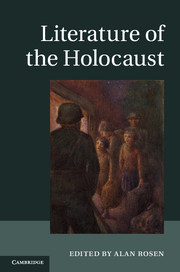Book contents
Chapter 1 - Wartime victim writing in Eastern Europe
Published online by Cambridge University Press: 05 June 2014
Summary
Diaries
Certain genres come to the fore under certain historical circumstances, and diaries, we know, are especially prevalent in wartime. “Everyone” wrote diaries, historian Emanuel Ringelblum reported in 1943, “journalists, writers, teachers, community activists, young people, even children.” And although most of those written in the Warsaw ghetto were destroyed during the Great Deportation, a significant number did survive: diaries written on the run, in a safe house, a monastery, an underground bunker, a loft, a pit, a labor camp, a transit camp – diaries in every European language.
In the Jew-Zone, the ghetto often served as a buffer against the truth: ghetto diarists were preoccupied with themselves or their fellow Jews and barely able to account for the behavior of the Germans. Not so the Hebrew pedagogue Chaim Kaplan, who began keeping a diary in 1933 and renamed it Megilat yisurin (in English, Scroll of Agony) on July 29, 1940, to signal a shift in perspective from the individual to the sacerdotal. Kaplan consistently reports on German actions, and he consistently employs Scripture to underscore the desecration of God’s covenant and the daily degradation of God’s chosen. “How has Warsaw, the royal, beautiful, and beloved city become desolate!” he writes on the first day of the Jewish year 5700 (in the Western calendar, September 14, 1939). Biblical analogies eventually fail him, as death itself ceases to have meaning, especially after Kaplan introduces a sinister confidant in the person of Reb Hirsch. “My Hirsch cannot be budged from his opinion,” Kaplan writes on June 16, 1942. “A catastrophe will befall us at the hands of the Nazis and they will wreak their vengeance on us for their final downfall,” Whether Hirsch was a real person or a literary invention, we will never know. His role, however, is clear: he is Kaplan’s alter ego, his naysayer, the speaker of unspeakable truths. Hirsch’s prophecy of doom, which proves to be accurate (the Great Deportation is a month away), anticipates the diary’s last, truly eschatological sentence, written in the diarist’s own voice: “If my life ends, what will become of my diary?”
- Type
- Chapter
- Information
- Literature of the Holocaust , pp. 15 - 32Publisher: Cambridge University PressPrint publication year: 2013



